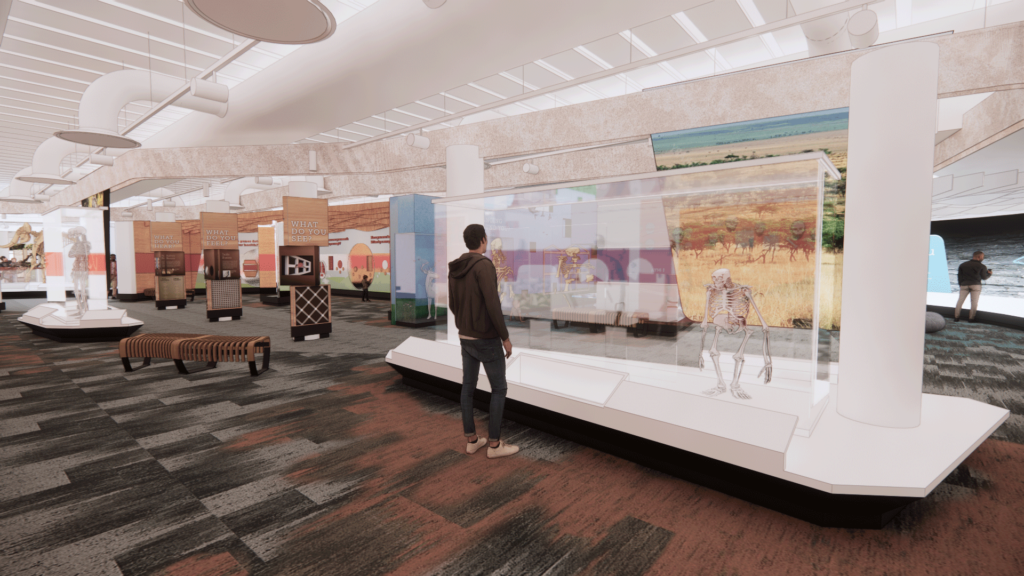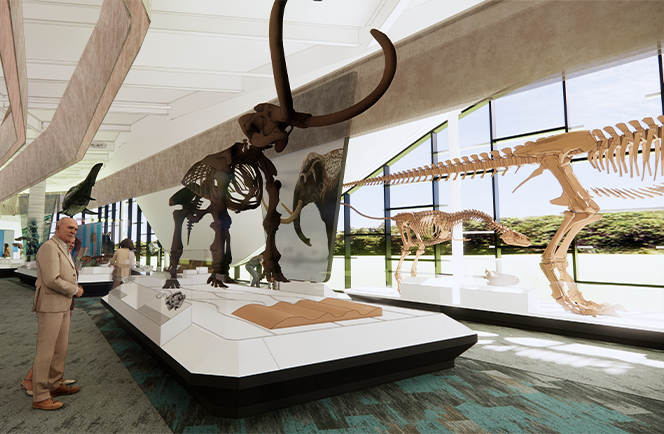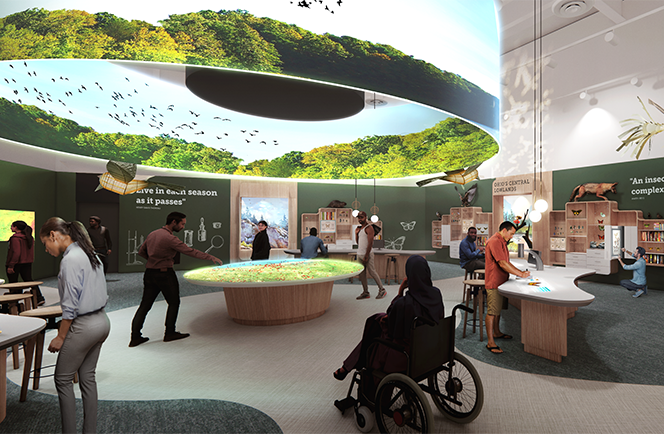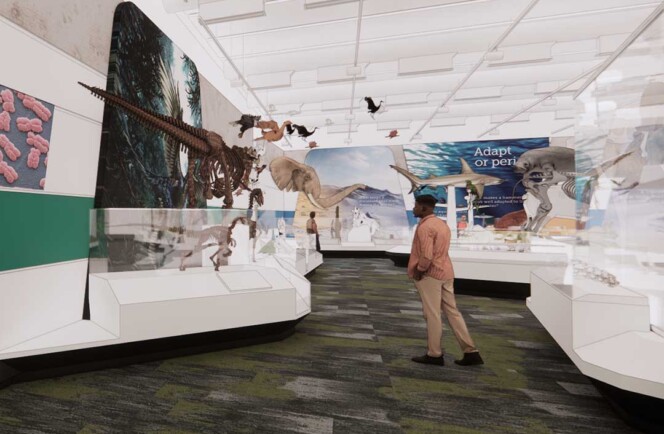Human Health & Evolutionary Medicine: Exploring the Intersection of Environment, Genetics, and Culture
As one of only a handful of museums in the country with a department dedicated to human health, the Museum is uniquely positioned to tackle this subject in a new way.
October 5, 2022
The Evolving Life Wing will transition directly from a discussion of human evolution into an innovative gallery focused on health—a higher level of connection to which most museums do not aspire. Throughout this gallery, health will be presented in an evolutionary framework that highlights how our environment has shaped—and shapes—our bodies.
Interactive exhibits will demonstrate how human adaptations can both protect us and make us vulnerable. You will experience the biological processes of disease, how well our biological and physical adaptations protect us from modern-day illnesses, and how our evolving lifestyles trigger changes to our genetic code.

We will ask visitors to consider how humans have adapted to coexist with infectious and chronic diseases. For example, you’ll learn that more than 75 percent of sickle-cell anemia cases occur in sub-Saharan Africa, where malaria is also endemic. Research has shown that people carrying the sickle-cell trait have, over time, also developed a resistance to malaria. An example of adaptation through natural selection, this trait demonstrates how pathogens can simultaneously harm and protect human health.
In another example, you will see how not only geographic locations, but also the physical spaces we construct and inhabit, have a significant impact on public health. Throughout history, humans have built urban centers that become overpopulated. But the rise of urban planning in the early 20th century has also enabled us to design and redesign cities that promote healthier outcomes.
Visitors will also learn about changes at the cellular and genetic levels that have affected and continue to affect our health. For example, the human digestive system has evolved in response to the introduction of new foods and food-preparation techniques throughout history. At one of the gallery stations, you’ll learn how the domestication of ruminant animals like cattle and sheep more than 10,000 years ago allowed people to harvest milk and eventually develop lactose tolerance.
At the genetic level, both lifestyle choices and environmental pressures can affect how our genes express themselves—whether they are turned “on” or “off” and, as a result, protect us or make us more susceptible to disease. The learning stations in this section of the gallery will help visitors understand how genes are turned on and off by factors such as aging.
We are inspired by the potential of this new gallery to reshape visitors’ perceptions of health: What does “health” mean for you and the planet? How do these meanings intersect? By prompting you to apply to your health everything you have learned about evolution and the environment, the human-health gallery unites all of the content in the Evolving Life Wing.

Exploring Our Past, Envisioning Our Future: New Curator Dr. Emma Finestone on the Museum’s Transformation
The Cleveland Museum of Natural History’s transformation includes a new, interdisciplinary strategy for collaboration among research staff. As part of this effort, the Museum recently appointed Dr. Emma Finestone Assistant Curator of Human Origins.

An Opportunity to Democratize Science: New Curator Dr. Elizabeth Sawchuk on the Museum’s Transformation
As we reimagine the Cleveland Museum of Natural History, we are building an interdisciplinary team of scientists whose research will be fully integrated with our new exhibits and educational programs. Dr. Elizabeth "Ebeth" Sawchuk recently joined this team as the Museum’s Assistant Curator of Human Evolution.

Experience Preview: The Evolving Life Wing
Exploring the Connections Among All Living Things
